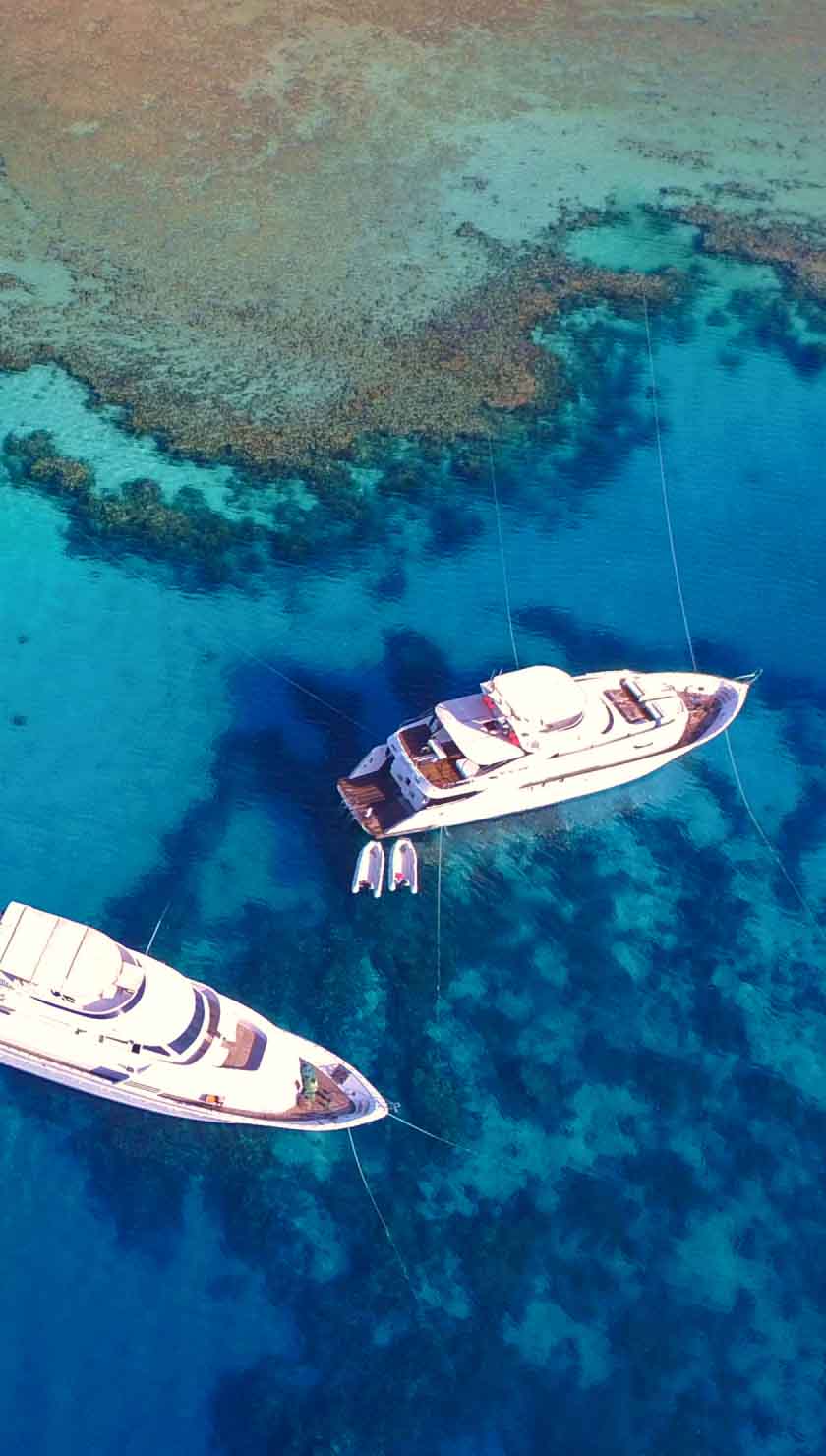Liveaboard Diving in Tubbataha
Divers on a liveaboard to Tubbataha are in for some spectacular diving. Tubbataha National Park covers almost 100,000 hectares of the pristine reef; it is, therefore, no surprise that it has been named one of the New Seven Wonders of the World, and has earned designation as a UNESCO World Heritage Site. Tubbataha sits in the middle of the Sulu Sea, east of Palawan, which is the last frontier of the Philippines in its own right. The atolls of this park lie 10 to 12 hours away from the nearest landmass by boat, which has saved them from the overexploitation plaguing most of the Philippines archipelago. North Atoll, South Atoll, and the smaller Jessie Beazley Reef to the northwest of the main atolls constitute the different areas of the park. Between them, they offer almost 20 different dive sites to explore. A Tubbataha liveaboard is the only way to visit the area. And with the low volume of boats and the high volume of marine life, a liveaboard in Tubbataha promises to be the trip of a lifetime.
The northern tip of North Atoll holds a couple of great shark-watching locations. First off, is Washing Machine, aptly named for its intense currents. At this dive site, a high diversity of shark species can be seen, such as whitetips, blacktips, and grey reef sharks. Next comes Shark Airport, a high-volume cleaning station whose size dwarfs all the other cleaning stations in the atolls. As you drift along the plateau at this dive site, be prepared for anything and everything to swim by you. Schools of grey reef sharks and whitetip sharks may even be joined by silky sharks, guitar sharks or whale sharks. In general, the northern tip of North Atoll attracts a lot of life, both on the seafloor and in the blue. Remember to look out for rays and turtles too!
The southern-southeastern tip of North Atoll offers a shipwreck dive site, Malayan Wreck, alongside an incredible wall with additional dive sites called Wall Street and Amos Rock. In this area, hammerhead sharks can often be seen, and grey reef sharks and whitetip sharks are consistently present. Adding even more pelagics to the mix, expect giant trevally, dogtooth tuna, a couple of different barracuda species swimming in large schools, turtles, and manta rays if you're lucky. Amos Rock sports a pleasant abundance of corals hard and soft, and in this general area of North Atoll, eye-popping benthic lifelike colorful crinoids and insanely patterned nudibranchs or flatworms bring the seafloor to life to match the show in the open water.
In the south-southeast of North Atoll, new reef life favorites include pygmy seahorses on huge gorgonian sea fans, African pompanos, and leaf scorpionfish. When the current picks up, larger reef species such as red snapper, giant grouper, and napoleon wrasse come out to play. Some of the other blue-water favorites include rainbow runners, which sometimes flash by in seemingly endless schools, and Spanish mackerel, whose o-shaped gaping mouths make a bizarre sight as they hunt for prey. Near the surface is the best spot to see mantas and eagle rays, along with green turtles and hawksbill turtles.
The northern tip of South Atoll is another area where divers can be wowed by schools of hammerheads, particularly at the dive site Ko-ok. While you're waiting for these incredible sharks to emerge from the blue, you'll have an equally amazing time traversing the pristine coral plateau under schools of circling jacks. The north of South Atoll is known for reef fish, turtles, and large pelagics, including sharks and manta rays- in other words, the iconic Tubbataha experience. In the south of South Atoll, Delsan Wreck holds a cleaning station whose clientele includes large reef fish, sharks, and even an occasional tiger shark.
To the northwest of Tubbataha, Jessie Beazley reef is included on your Tubbataha liveaboard itinerary. Here again, hammerhead sharks are present. Grey reef sharks, silky sharks, and even whale sharks can also be seen. Pristine coral, with a particularly impressive area of branching Acropora corals, puts the icing on the cake at this dive site. Note that the current on Jessie Beazley can be strong, so heed your dive guide while you're enjoying the marine life that the fast-moving water brings in.
Itinerary details
The length of liveaboard itineraries in Tubbataha can be 6, 7, or 11+ nights, with a budget ranging from 280 to 500 euros per night. Most itineraries spend the entire time among Tubbatahaís outstanding dive sites, but there are two liveaboard.com trips that combine Tubbataha with diving in other excellent locations. The first is a Seadoors trip that uses Cebu as the departure port and includes diving in Balicasag (Bohol), Apo island (Negros), and Calusa (Palawan) on its way to Tubbataha. The trip ends in Puerto Princesa. The second itinerary is a transit trip either from Batangas to Puerto Princesa or vice versa, run by the M/V Discovery Palawan. This itinerary goes to Apo Reef (Mindoro) and the Cuyo islands (Palawan). Liveaboards in Tubbataha range from the super luxurious S/Y Siren with its billowing sails to refurbished merchant vessels and dedicated M/V diving yachts- all enjoy different degrees of luxury, but consistently offer great diving amenities.
The experience level required by Tubbataha liveaboards is usually Open Water, with a range of zero to 40 logged dives. The exception is Solitude One, which requires certification of Advanced Open Water and fifty logged dives. Note that while the Philippines is not as infamous for fast-moving water as the Maldives or Indonesia, Tubbataha is as exposed as one can get. Its location in the middle of the sea will certainly subject it to some open water conditions in terms of waves and currents. However, inexperienced divers are well taken care of on all the boats. You will depend on your dive guide to advise you of any particular challenges or experience requirements at a given site.
Liveaboard departures
Puerto Princesa, Palawan's capital city, is the departure location for most Tubbataha liveaboards. Flights to Puerto Princesa run regularly from both Manila and Cebu City on Philippine Airlines and Cebu Pacific. To get to Manila or Cebu City, direct flights are available from many Southeast Asian countries. International flights will usually transfer in the region before flying into the Philippines. For the one liveaboard itinerary starting in Cebu City, travelers will have an easy time flying from Manila to Cebu City or arriving in Cebu City on an international flight plan. For the liveaboard itinerary connecting to Batangas, travelers will fly into Manila and transfer to the Batangas port on a bus.
Visitors with some extra time in Puerto Princesa can take their pick from premier land and sea activities near the city, including island-hopping, jungle explorations, and Palawanís other World Heritage Site - the Puerto Princesa Underground River. Puerto Princesa is only a van-ride away from many dive sites with 100% coral cover in areas like Port Barton and famous El Nido. Entry-level divers in Palawan can enjoy these sites, many of which are shallow reef slopes in protected bays.
Best time to travel
The Tubbataha diving season is only from March through June. This is when the seas and skies are at their calmest. Therefore, expect all Tubbataha liveaboards to run their trips during these months.











